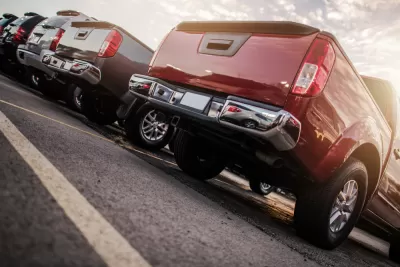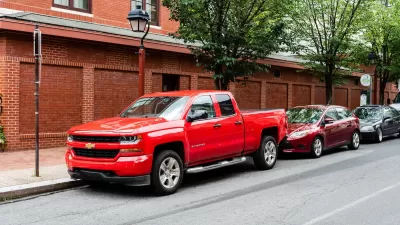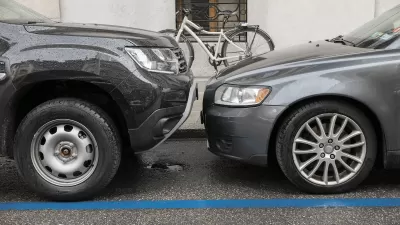Ever wonder where the supersizing of cars is going to end? Kaid Benfield dives deep into the subject and suggests five actions we can take to get to a safer spot in the road.

“I’ve become obsessed with the size of personal vehicles, and I’m pretty sure it’s driving my wife crazy. Every time we take a walk, run an errand, or find ourselves in a parking facility, I can’t help myself from commenting constantly about the enormous size of many newer cars, trucks, and especially SUVs compared to any older ones nearby. I worry that my obsession is getting annoying, so bear with me while I dive into the subject in some detail in an attempt to purge it from my system,” Kaid Benfield says. He provides a lengthy description of why this is, and wraps up with five actions we can take to make a difference:
- Close SUV Loopholes and regulate all everyday vehicles the same under CAFE and other government programs.
- Clarify that the mission of the Highway Traffic Safety Administration and National Transportation Safety Board includes protecting pedestrians and others outside of vehicles from dangerous vehicle design.
- Tax vehicles on size and weight, not just price. The Los Angeles Times editorial board is among many observers endorsing this measure, citing with approval weight-based taxes (generally assessed when the vehicles are registered each year) in Washington, DC, New York, Florida, and Virginia.
- Create incentives to improve the design of large vehicles to allow greater front- and rear-end visibility.
- Reduce the demand for heavy EV batteries. As noted, we need EVs and the pollution-reducing benefits that they provide. But given the downsides, we should be creating incentives to design, manufacture, sell and purchase ones that don’t require such additional weight and natural resource consumption.
FULL STORY: CARZILLA: Are huge SUVs & trucks hurting pedestrians and walkable communities?

Study: Maui’s Plan to Convert Vacation Rentals to Long-Term Housing Could Cause Nearly $1 Billion Economic Loss
The plan would reduce visitor accommodation by 25,% resulting in 1,900 jobs lost.

North Texas Transit Leaders Tout Benefits of TOD for Growing Region
At a summit focused on transit-oriented development, policymakers discussed how North Texas’ expanded light rail system can serve as a tool for economic growth.

Why Should We Subsidize Public Transportation?
Many public transit agencies face financial stress due to rising costs, declining fare revenue, and declining subsidies. Transit advocates must provide a strong business case for increasing public transit funding.

How to Make US Trains Faster
Changes to boarding platforms and a switch to electric trains could improve U.S. passenger rail service without the added cost of high-speed rail.

Columbia’s Revitalized ‘Loop’ Is a Hub for Local Entrepreneurs
A focus on small businesses is helping a commercial corridor in Columbia, Missouri thrive.

Invasive Insect Threatens Minnesota’s Ash Forests
The Emerald Ash Borer is a rapidly spreading invasive pest threatening Minnesota’s ash trees, and homeowners are encouraged to plant diverse replacement species, avoid moving ash firewood, and monitor for signs of infestation.
Urban Design for Planners 1: Software Tools
This six-course series explores essential urban design concepts using open source software and equips planners with the tools they need to participate fully in the urban design process.
Planning for Universal Design
Learn the tools for implementing Universal Design in planning regulations.
City of Santa Clarita
Ascent Environmental
Institute for Housing and Urban Development Studies (IHS)
City of Grandview
Harvard GSD Executive Education
Toledo-Lucas County Plan Commissions
Salt Lake City
NYU Wagner Graduate School of Public Service





























